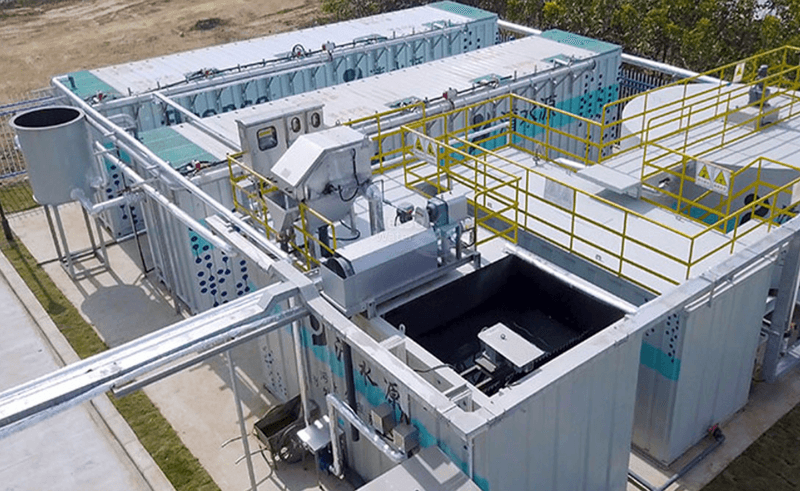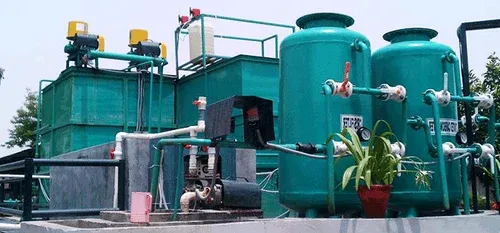Technologies for Decentralized Wastewater Treatment: A Sustainable Light for the Future
A Revolution in Wastewater Treatment: Delivering
Decentralized Wastewater Treatment (DWT) systems shine as a ray of hope, showing the way toward environmentally friendly as well as economically responsible wastewater management for communities all over the world in an increasingly efficient and sustainable world. DWT systems, in contrast to their centralized counterparts, adopt a localized strategy that has numerous advantages over the conventional large-scale treatment plants. This blog takes a closer look at the fundamentals of DWT, looking into its various forms, the procedures involved, and all of the advantages it provides. In the end, it sheds light on how DWT might help to create a sustainable future.
Different DWT systems are available to meet various needs and circumstances. The most common kind, onsite structures, are made for handling wastewater from individual homes. Septic tanks are usually used in these systems for the initial stage of treatment, which separates the the liquid as well as solids. Right after treatment, the wastewater is then further purified using soil-based techniques, encouraging a natural and environmentally responsible approach. Cluster systems, on the other hand, cater to multiple homes or establishments, consolidating wastewater treatment in a centralized location within a community. This alternative is practical and sustainable, and it is especially beneficial in places where the soil is not suitable for conventional septic systems.

An Adaptive Approach: The Intervention Procedures in DWT
DWT systems use a multi-tiered treatment process that guarantees efficient and comprehensive wastewater processing:
• Primary Treatment: The goal of this first phase is to distinguish between the wastewater's liquid and solid components. It is generally accepted to use settling and filtering techniques in order to achieve this separation.
• Secondary Treatment: This stage uses either anaerobic or aerobic biological procedures to break down the organic substances that are present in the wastewater.
• Tertiary Treatment: The effluent is further refined in this last stage, which additionally acts as a polishing stage. This step often involves the use of environmentally friendly methodologies, like built wetlands or polishing ponds, to successfully remove any leftover harmful substances and guarantee the treated wastewater satisfies the necessary quality requirements.

The Tempting Benefits of DWT Technologies
For communities looking for an effective and sustainable method of managing their wastewater, DWT systems have a ton of potential. The following are some of their main benefits:
- Cost-Effectiveness: Distributed water harvesting (DWT) systems are a financially viable option, particularly in fields with limited infrastructure or challenging terrain, as they usually need lower capital and operating costs compared to centralized systems.
- Flexibility: DWT systems can adapt remarkably well to meet the diverse needs of various environments. They offer an adaptable solution that can be used in suburban, rural, and even some urban settings for efficiently handling wastewater.Environmental Benefits: By allowing the reuse of effluent for issues like irrigation as well as toilet flushing, DWT systems greatly enhance environmental protection. As a result of this, the environmental damage caused by point source discharges from conventional wastewater treatment plants is reduced and precious water resources are preserved.
- Sustainability: DWT systems show a strong commitment to sustainable wastewater management through the use of natural treatment processes like constructed wetlands and soil-based methods, which promotes a more harmonious relationship with the environment.
A Guide for Safe and Sustainable DWT Implementation: Important Things to Take Into Account
Although Decentralized Wastewater Treatment (DWT) systems offer numerous advantages, there are some significant variables that must be carefully considered before implementing DWT systems successfully. These include navigating the regulatory framework, deciding the suitability of the site for maintenance, and ongoing maintenance requirements. Communities are able to ensure that their DWT systems operate effectively, adhere to environmental safety standards, and contribute to a sustainable future by thoroughly addressing these factors.

1. Prioritizing thorough routine maintenance:
Frequency and Scope: Regular maintenance must be scheduled in order for any DWT system to function at peak efficiency and have a long lifespan. This schedule needs to be tailored to the specific type and size of the system. Generally, it calls for cleanings, inspections, and component replacements at predetermined intervals. It is imperative that you consult qualified professionals and adhere to the manufacturer's instructions.
Training and Work Experience: To guarantee proper maintenance, individuals with the required training and familiarity with the specific DWT system in use are required.
This could mean working with recognized service providers or giving specific staff members internal training. Staff must receive regular training updates in order to stay informed about any changes to DWT maintenance procedures and to be prepared to handle any issues that may arise.
Maintaining Records and Documentation: It is essential that you maintain detailed records for each maintenance procedure, including cleanings, repairs, and inspections. This documentation is a helpful instrument for future reference because it renders it feasible to evaluate trends and spot any possible recurrent issues. Regulatory authorities may additionally regard it as evidence of responsible management practices.
2. Site Suitability Evaluation: Selecting the Suitable System for the Appropriate Location
- Soil Characteristics: The requirements for soil vary amongst DWT systems. The efficiency of the system and its compatibility with the environment are significantly affected by variables such as soil type, permeability, and depth to the water table. To evaluate the suitability of various treatment options and make sure the selected system performs optimally within the specific soil conditions, a thorough soil analysis is essential.
- Space Availability: The DWT system's physical footprint requires careful thought. A sufficient amount of room is needed for the septic tank, drain field, and other treatment components in onsite systems. Centralized treatment facilities may need their own dedicated space in cluster systems. It is essential to assess the space available at the chosen site to make sure the system of choice can be installed and maintained correctly without sacrificing functionality or safety.
- Environmental Impact: It is imperative to assess the DWT system's possible environmental effects. This entails evaluating the likelihood of groundwater contamination, making sure wastewater is disposed of properly to prevent damage to neighboring ecosystems, and taking the system's overall ecological footprint into account. It is crucial to choose a system that reduces its impact on the environment and is in line with sustainable practices.
3. Managing the Regulatory Environment to Ensure Safety and Compliance:
- Local Regulations: Permitting procedures for DWT systems, effluent quality standards, and wastewater treatment standards are governed by particular regulations unique to each region. It is crucial to fully comprehend and abide by these local laws. This could entail speaking with regional authorities, securing the required licenses, and making sure the selected DWT system complies with all legal specifications.
- Technical Expertise: A successful DWT implementation can be greatly aided by consulting with competent engineers and wastewater treatment specialists who are knowledgeable about local regulations. Their knowledge can guarantee adherence to all technical and legal specifications, enhance system performance and design, and handle any difficulties that might come up along the way.
- Ongoing Communication: Maintaining open communication with local authorities throughout the DWT implementation process is essential. This fosters transparency, addresses concerns promptly, and ensures that the chosen system aligns with the broader community's environmental and sustainability goals.
By prioritizing these key considerations, communities can harness the potential of DWT systems while ensuring their efficient operation, environmental compatibility, and long-term sustainability. DWT systems, when implemented thoughtfully and responsibly, can play a significant role in fostering a cleaner future and responsible wastewater management practices for generations to come.
Examples from the Real World: DWT Creating an Impact
The DWT's potential is demonstrated by the success stories of its implementation in different communities. One example of how centralized, satellite, and cluster DWT systems can support controlled growth while maintaining the rural character of the area is Loudoun County, Virginia. Similarly, Rutherford County, Tennessee, shows how high-density developments without traditional sewer infrastructure can successfully manage their wastewater by using STEP systems in conjunction with drip irrigation and recirculating sand filters.
Conclusion: A Sustainable Future Beckons with DWT
In conclusion, Decentralized Wastewater Treatment technologies offer a forward-thinking and comprehensive solution to the challenges of wastewater management. As we navigate the complexities of environmental conservation, DWT stands as a beacon of hope, illuminating a path towards responsible wastewater management and a more sustainable future for generations to come.